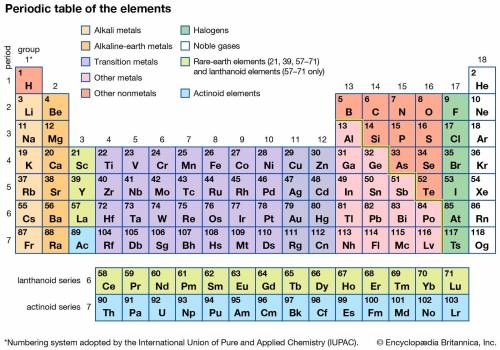
Chemistry, 26.06.2019 18:30 malissa0325
Imagine you are given a mystery element. it is, however, a discovered and known element. you may perform a maximum of two observations or tests to determine its identity. time and money is critical, so you need to prioritize your tests. if you can identify the mystery element with a single test, you get 100 super-geek points from your research lab team. pick two tests and justify why you think they will identify the mystery element with certainty. if you think the first test will be enough, explain why. choose from these available tests: • classification into metal, nonmetal, or metalloid • count of valence electrons • count of electron shells • atomic radius (error range: +/- 1 pm) • electronegativity (error range: +/- 0.1) • first ionization energy (error range: +/- 10 kj/mole) • melting point (error range: +/- 10 c) • boiling point (error range: +/- 20 c)

Answers: 1


Other questions on the subject: Chemistry


Chemistry, 22.06.2019 17:40, aaliyahthomas37
Which statement about hf is true? it is zero for any compound in its standard state. it is positive when the bonds of the product store more energy than those of the reactants. it is negative when a compound forms from elements in their standard states. it is zero for any element that is in the liquid state.
Answers: 1

Chemistry, 22.06.2019 20:00, 20calzoy
There are two steps in the usual industrial preparation of acrylic acid, the immediate precursor of several useful plastics. in the first step, calcium carbide and water react to form acetylene and calcium hydroxide: cac2 (s) + 2h2o (g) → c2h2 (g) + caoh2 (s) =δh−414.kj in the second step, acetylene, carbon dioxide and water react to form acrylic acid: 6c2h2 (g) + 3co2 (g) + 4h2o (g) → 5ch2chco2h (g) =δh132.kj calculate the net change in enthalpy for the formation of one mole of acrylic acid from calcium carbide, water and carbon dioxide from these reactions. round your answer to the nearest kj .
Answers: 3

Chemistry, 23.06.2019 00:30, mariaramirez110379
On the periodic table, elements are arranged by which of the following. a. mass numbers. b. increasing atomic number. c. alphabetical order. or d. density
Answers: 1
You know the right answer?
Imagine you are given a mystery element. it is, however, a discovered and known element. you may per...
Questions in other subjects:


Physics, 08.04.2020 21:10



Mathematics, 08.04.2020 21:10




Mathematics, 08.04.2020 21:10




